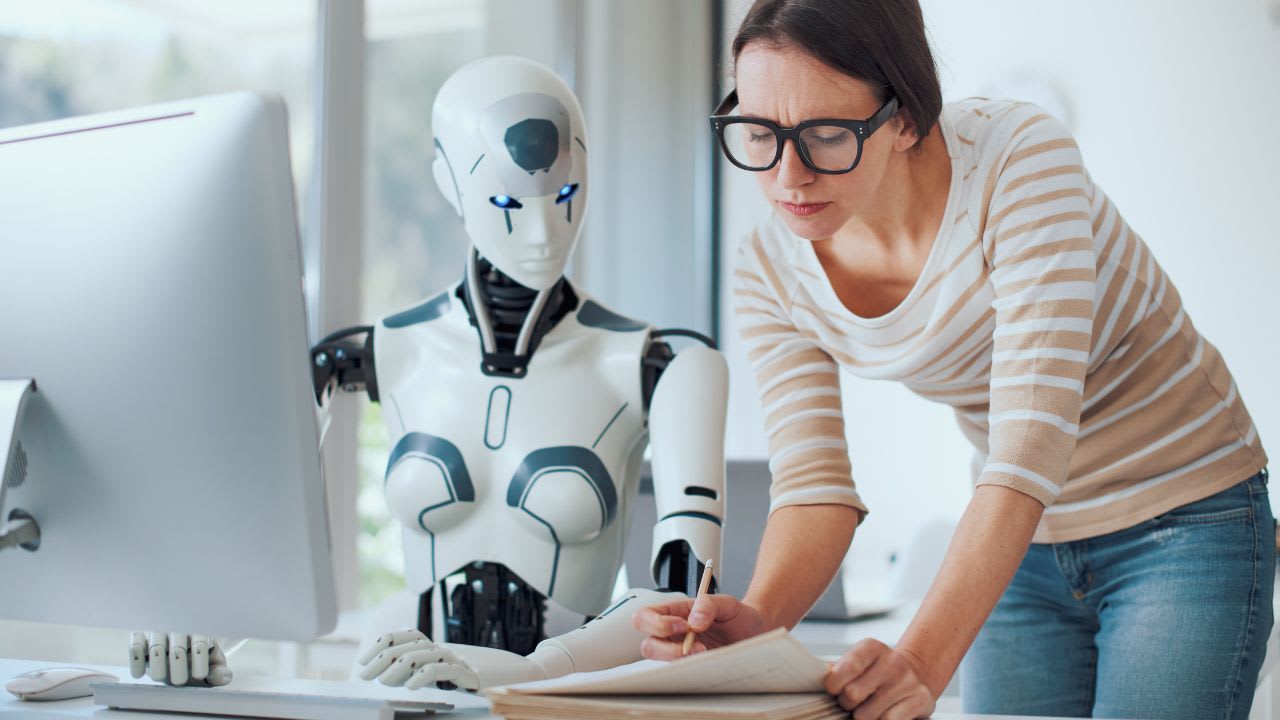Your Next Co-Worker is AI—Here’s How to Work With It

In bustling offices from Manila to Makati, the conversation is shifting. As Artificial Intelligence weaves its way into everyday work, the focus is not solely on replacing human effort but on redefining roles and creating spaces for creativity and innovation. While concerns about AI replacing human jobs persist, emerging research suggests that AI has the potential to augment human capabilities rather than simply displace them.
The 2025 McKinsey report on AI Adoption and Workforce Transformation highlights that while almost all companies are investing in AI, only a fraction of them have reached maturity in its implementation. The key challenge? Leadership and strategy, rather than employee resistance. Here’s a deep dive into how AI is transforming work, the skills employees need to stay relevant, and strategies for achieving a balance between human intelligence and automation in the Philippines.
The Rise of AI in the Philippines and Beyond
Automation has been steadily gaining traction in the Philippines, particularly within the Business Process Outsourcing (BPO) sector—a significant contributor to the nation's economy. Studies suggest that up to 300,000 jobs in the BPO industry could be affected by AI integration in the next five years, with routine and repetitive tasks being most susceptible to automation. Despite these concerns, industry leaders remain optimistic. Jack Madrid, president of the IT and Business Process Association of the Philippines, projects a 7% growth in the IT-BPM industry for 2024, with job numbers increasing to 1.82 million and revenue reaching $38 billion. This optimism is rooted in the belief that AI can complement human labor, enhancing productivity and creating new roles that require advanced skills.
AI’s Impact on Job Roles and Industry Transformation
AI is altering job landscapes by taking over repetitive and rule-based tasks, allowing employees to focus on higher-value activities. A 2024 research paper from Humanities and Social Sciences Communications, titled ‘Automation and Workforce Opportunities: Enhancing Job Efficiency for Women and Labor-Intensive Workers’, details how AI-powered digital scribes in healthcare are freeing up doctors from paperwork, allowing them to focus on patient care. Similarly, AI-driven HR platforms streamline recruitment, making it faster and more data-driven while still requiring human decision-making for final hiring decisions.
Companies that effectively integrate AI without workforce displacement offer valuable insights:
- Manufacturing: AI-powered robots assist workers on production lines, handling hazardous tasks while humans oversee quality control and problem-solving.
- Finance: AI-driven fraud detection systems enhance security, but human analysts interpret anomalies and provide strategic recommendations.
- Retail and Customer Service: Chatbots manage routine customer queries, but complex issues still require human empathy and intervention.
The Skills Shift: What employees need to stay relevant
As AI automates routine tasks, the demand for hybrid skills is on the rise. The ‘Impact of Artificial Intelligence on Employment and Workforce Development Report (2024)’ emphasizes that roles requiring creativity, emotional intelligence, and strategic thinking remain resilient. Employers now prioritize:
- Technical literacy: Basic understanding of AI tools and data interpretation.
- Problem-solving: Ability to work alongside AI to enhance decision-making.
- Adaptability and continuous learning: Staying ahead through lifelong learning and reskilling programmes.
Additionally, research highlights the necessity of proactive reskilling. Companies that invest in upskilling their employees are more likely to harness AI’s potential effectively, ensuring their workforce remains competitive in an evolving job market.
Ethical and Organisational Challenges in AI Integration
While AI offers efficiency, its implementation comes with significant challenges. The fear of workforce displacement looms large, even among high-skilled knowledge workers, making continuous reskilling essential. Additionally, AI-driven hiring tools have faced criticism for perpetuating biases, reinforcing the importance of human oversight and transparent data usage. Economic disparity is another pressing concern—without adequate retraining efforts, AI adoption could deepen wage gaps, leaving lower-skilled workers at a disadvantage. Addressing these issues requires a proactive approach, balancing technological advancements with ethical responsibility and inclusive workforce strategies.
The Future of Work: Finding the Right Balance
The balance between AI and human intelligence lies in a collaborative approach where technology enhances, rather than diminishes, human capabilities. AI’s ability to handle repetitive tasks can significantly reduce cognitive overload, allowing employees to focus on creativity, problem-solving, and innovation. Companies that leverage AI as a tool for efficiency—rather than a means of replacing human roles—will be the ones driving workforce transformation.
To achieve this balance, businesses and policymakers must take a proactive approach by investing in AI literacy programmes to equip employees with necessary skills, enforcing ethical AI governance to mitigate biases, and fostering a culture of continuous learning and adaptation to keep pace with technological advancements. The key to success lies in strategic integration, where AI empowers employees rather than rendering them obsolete.
Harnessing AI to Elevate Human Potential, Not Replace It
The narrative of our modern workplace is evolving—not as a battle of man versus machine, but as a journey of collaboration between human intelligence and advanced technology. AI is not the enemy of the workforce but a powerful collaborator when implemented correctly. The key to sustainable AI adoption lies in leadership-driven strategies that empower employees with the right skills and mindset as the future where humans and machines work in harmony is not only possible but essential. The challenge is clear: create an environment where AI alleviates routine burdens, empowering the human spirit to innovate and drive progress. By prioritising human intelligence alongside technological advancements, businesses can unlock AI’s full potential while ensuring a future where humans and machines thrive together.
At TechHR Pulse Philippines 2025, we will showcase how AI can amplify human potential rather than replace it—sparking a new era of innovation, collaboration, and business success. Don’t miss the chance to discover how AI can transform your workforce strategy and elevate your organization’s capabilities.
Register Now for TechHR Pulse Philippines 2025. For more details regarding the conference speakers, sessions, agenda themes, and more download the People Matters TechHR Pulse Philippines 2025 Delegate Brochure


